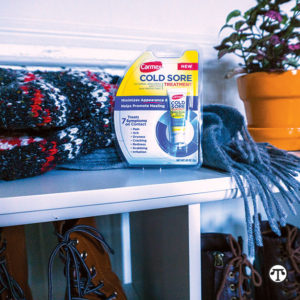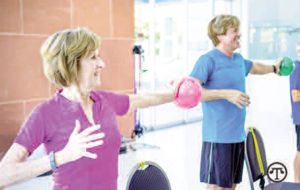 FOR YOUR HEALTH
FOR YOUR HEALTH
The American Cancer Society has announced updated cancer statistics, facts and figures which show a decline in the cancer death rate in recent years.
The main takeaway is, the cancer death rate dropped 1.7 percent from 2014 to 2015, continuing a drop that began in 1991 and has reached 26 percent, resulting in nearly 2.4 million fewer cancer deaths during that time.
The data is reported in Cancer Statistics 2018, the American Cancer Society’s comprehensive annual report on cancer incidence, mortality, and survival. It is published in California: A Cancer Journal for Clinicians and is accompanied by its consumer version: Cancer Facts and Figures 2018.
The report estimates that there will be 1,735,350 new cancer cases and 609,640 cancer deaths in the United States in 2018*. The cancer death rate dropped 26 percent from its peak of 215.1 per 100,000 population in 1991 to 158.6 per 100,000 in 2015. A significant proportion of the drop is due to steady reductions in smoking and advances in early detection and treatment. The overall decline is driven by decreasing death rates for the four major cancer sites: Lung (declined 45 percent from 1990 to 2015 among men and 19 percent from 2002 to 2015 among women); female breast (down 39 percent from 1989 to 2015), prostate (down 52 percent from 1993 to 2015), and colorectal (down 52 percent from 1970 to 2015).
While the new report also finds that death rates were not statistically significantly different between whites and blacks in 13 states, a lack of racial disparity is not always indicative of progress. For example, cancer death rates in Kentucky and West Virginia were not statistically different by race, but are the highest of all states for whites.
Prostate, lung, and colorectal cancers account for 42 percent of all cases in men, with prostate cancer alone accounting for almost one in five new diagnoses.
For women, the three most common cancers are breast, lung, and colorectal, which collectively represent one-half of all cases; breast cancer alone accounts for 30 percent all new cancer diagnoses in women.
The lifetime probability of being diagnosed with cancer is slightly higher for men (39.7 percent) than for women (37.6 percent). Adult height has been estimated to account for one-third of the difference.
Liver cancer incidence continues to increase rapidly in women, but appears to be plateauing in men. The long-term, rapid rise in melanoma incidence appears to be slowing, particularly among younger age groups. Incidence rates for thyroid cancer also may have begun to stabilize in recent years, particularly among whites, in the wake of changes in clinical practice guidelines.
The decline in cancer mortality, which is larger in men (32 percent since 1990) than in women (23 percent since 1991), translates to approximately 2,378,600 fewer cancer deaths (1,639,100 in men and 739,500 in women) than what would have occurred if peak rates had persisted.
“This new report reiterates where cancer control efforts have worked, particularly the impact of tobacco control,” said Otis W. Brawley, M.D., chief medical officer of the American Cancer Society. “A decline in consumption of cigarettes is credited with being the most important factor in the drop in cancer death rates. Strikingly though, tobacco remains by far the leading cause of cancer deaths today, responsible for nearly three in ten cancer deaths.”
*Estimated cases and deaths should not be compared year-to-year identify trends.
 FOR YOUR HEALTH
FOR YOUR HEALTH

 (NAPSI) — The New Year is a wonderful time to not only evaluate your past, but also explore your goals for the year ahead. While it is common that health and fitness resolutions land at the top of people’s list, the truth is that achieving any goal in 2018 is dependent upon good health. Whether planning that bucket list vacation, trying a new hobby or spending more time outdoors, a healthy fitness routine is the backbone of making these goals achievable.
(NAPSI) — The New Year is a wonderful time to not only evaluate your past, but also explore your goals for the year ahead. While it is common that health and fitness resolutions land at the top of people’s list, the truth is that achieving any goal in 2018 is dependent upon good health. Whether planning that bucket list vacation, trying a new hobby or spending more time outdoors, a healthy fitness routine is the backbone of making these goals achievable. This year, create an attainable health and fitness goal to help you reach all your resolutions. SilverSneakers, the nation’s leading fitness community for older adults, offers the following tips on how to make resolutions that will help you live life well in 2018:
This year, create an attainable health and fitness goal to help you reach all your resolutions. SilverSneakers, the nation’s leading fitness community for older adults, offers the following tips on how to make resolutions that will help you live life well in 2018: 3. Cover your lips from the cold: Lips can be stripped of moisture because of dry air that comes with the changing weather. Before leaving the house, cover your lips with a scarf to protect them.
3. Cover your lips from the cold: Lips can be stripped of moisture because of dry air that comes with the changing weather. Before leaving the house, cover your lips with a scarf to protect them.


